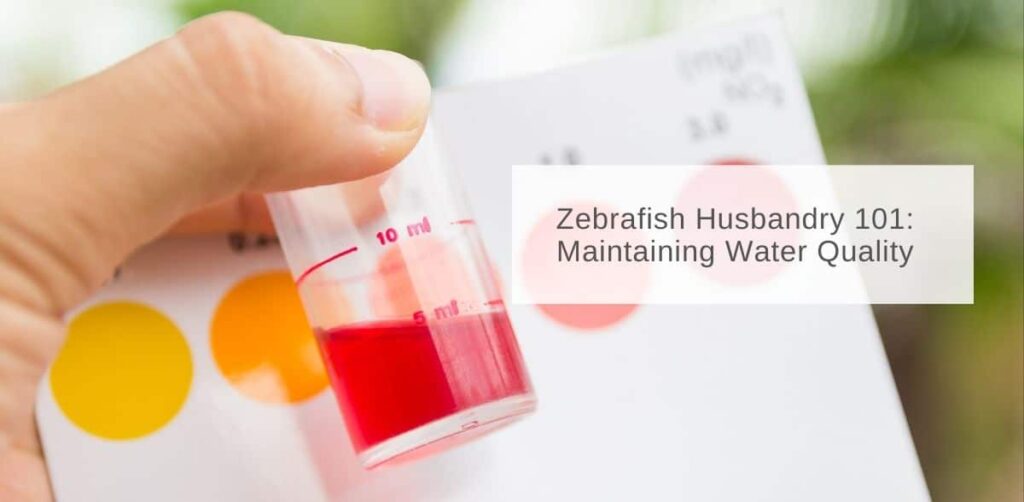Maintaining water quality is crucial for successful zebrafish maintenance and husbandry, especially during the startup of a fish rack. This video discusses how to keep track of the water quality parameters (ammonia, nitrites, nitrates, and pH), gives an example of how we started our fish rack, and the process of the nitrogen cycle for initial rack set-up.
Interested in learning more? You can view the rest of our Zebrafish Husbandry 101 series here, and learn more about our zebrafish services here.
Transcript
For the fish’s health, it’s important to keep track of water quality parameters, including ammonia, nitrites, nitrates, and so here we’re going to test the ammonia. First, we shake the bottles we put eight drops of each of them in to a test tube that has five milliliters of water and we give them a little shake and wait.
It is especially important to be tracking your water parameters while you’re starting up a new system. We also check our water parameters once a week to make sure nothing is going wrong. Next, we will test the nitrites, the next step in the nitrogen cycle. We will add five drops of the nitrite solution, cap it, and shake it again. The final parameter we’re going to be testing today are the nitrates, the final product of the nitrogen cycle. So now we will wait until the color develops. We can compare it to the color chart on hand.
Keeping track of your water parameters and your fish rack is always important, but it is extremely important during the startup of a fish rack, when starting up a fish rack or an aquarium, it needs to go through the process of the nitrogen cycle, which is called cycling the tank. This means that the beneficial bacteria, which helps to break down ammonia and nitrites, which are toxic to fish, need to get built up enough in your aquarium.
In our case, we did not have any fish on the rack when we were starting it up. We added bacteria from a bottle and consistently fed the rack straight ammonia to simulate fish waste. So what we would see is an increase in ammonia, then the beneficial bacteria would start to grow and the amonia would drop. We would see a nitrite increase that would drop, and then a final nitrate spike. And the only way to remove nitrates from a closed system such as our rack system is by doing water changes.
So let’s get back to our current water perimeter tests. So you can see that the yellow tube on the left side is the ammonia. And this is at about zero parts per million, which is what we would expect since our rack is fully cycled. Then we have our nitrite test, which is a bluish-purple color, and I would say that’s about 0.25 parts per million here. And finally, our nitrate test, which is a reddish-orange color here, it’s probably about 40 parts per million. Since our rack is fully cycled, it should always be at zero parts per million ammonia and zero parts per million of nitrite, if it starts to go above this, this could indicate that there’s something wrong with our beneficial bacterial culture and it’s something that we might need to address. So our nitrate levels were at about 40 parts per million, which is a little bit high. Ideally, there would be around 20 parts per million.

